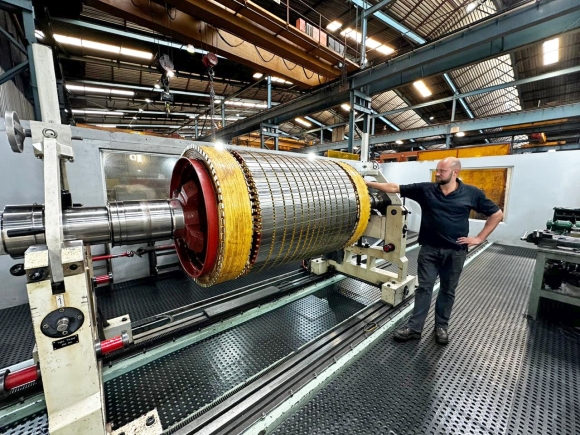Spare units are one way to ensure a reliable plant that suffers the least downtime. But spare components are very difficult to obtain from the older machines – and complete spare machines are either unavailable or prohibitively expensive.
Illovo Sugar has two 10MVA 8MW 4-pole cylindrical rotor synchronous generators utilised at their Noodsberg and Sezela mills in Kwazulu-Natal. These machines were originally of AEG manufacture and are approximately four decades old.

Marthinusen & Coutts (M&C) has long been involved in maintaining such machines for end-users, but mostly in overhauling, repairing and rewinding the machines. Complete spare components are sometimes considered when the end-users are unable to procure them from the OEM’s. M&C has been assisting customers in these cases and has been building up expertise and equipment to design and manufacture components and machines to satisfy their requirements.
M&C undertook to produce a spare complete rotor in response to Illovo’s request for a service spare. The specific unit in question here is a 4-pole cylindrical rotor of 10MVA (8MW) rating, including the rotating brushless exciter and diode ring subassembly.
The division had been in detailed discussions with Illovo Sugar with the objective of producing spare components for their alternators. A spare stator has already been manufactured that can operate at both 3.3kV and 6.6kV to satisfy the supply voltages of the various units at the two different mills.
“During a scheduled maintenance visit to Noodsberg we gathered the bulk of the design data for the project, comprising all the essential dimensions and configurations, supported by photographs, which we used to design our unit for manufacture,” explained Dominik Krob, M&C’s Project Manager.
“After being awarded the contract, we had the rotor in again for service during the off-crop season at the end of last year, which enabled us to gather the balance of the data we needed for the reverse engineering design, with the help of a state-of-the-art electronic probe we’d recently acquired to accurately measure the geometry of the rotor. Thereafter we created a 3D CAD model, from which we generated the manufacturing drawings we needed to work from.”
M&C’s scope of manufacturing tasks also included doing the windings, VPI process, exciter rotor and the diode carrier subassembly, the assembly, testing and high-speed balancing of the completed new rotor. ACTOM’s Electrical Machines business manufactured the lamination core-pack and Metalplus procured the material for the rib-shaft and welded and precision machined it. The welding was done using Metalplus’ well-known qualified submerged-arc welding (SAW) system.
“This was a great achievement by M&C, as to carry out these complex reverse engineering manufacturing processes you need to have the engineering design capability and a skilled team of artisans to perform all the complex tasks involved,” Dominik commented.
“We reverse engineered the unit in less than four months – including the exciter rotor and the diode carrier subassembly.”
